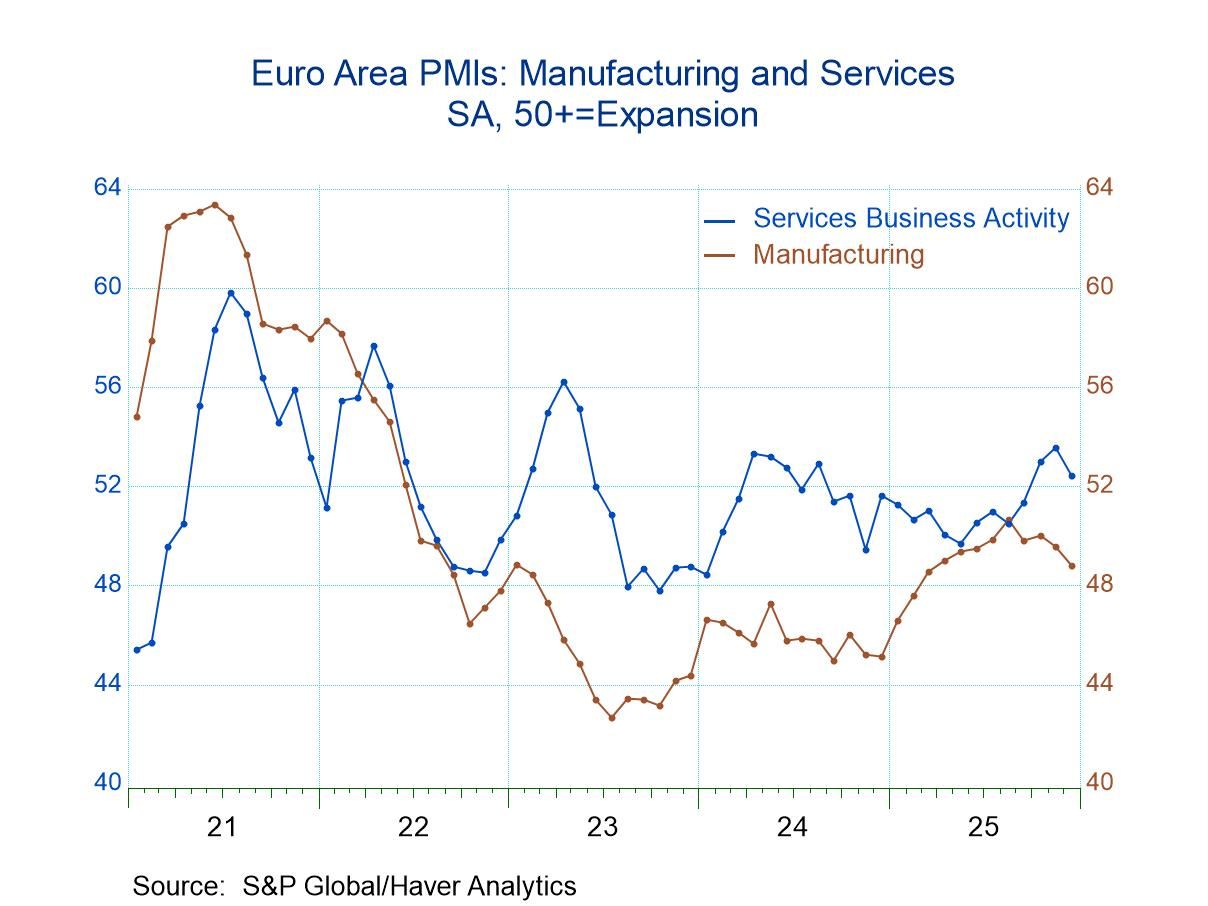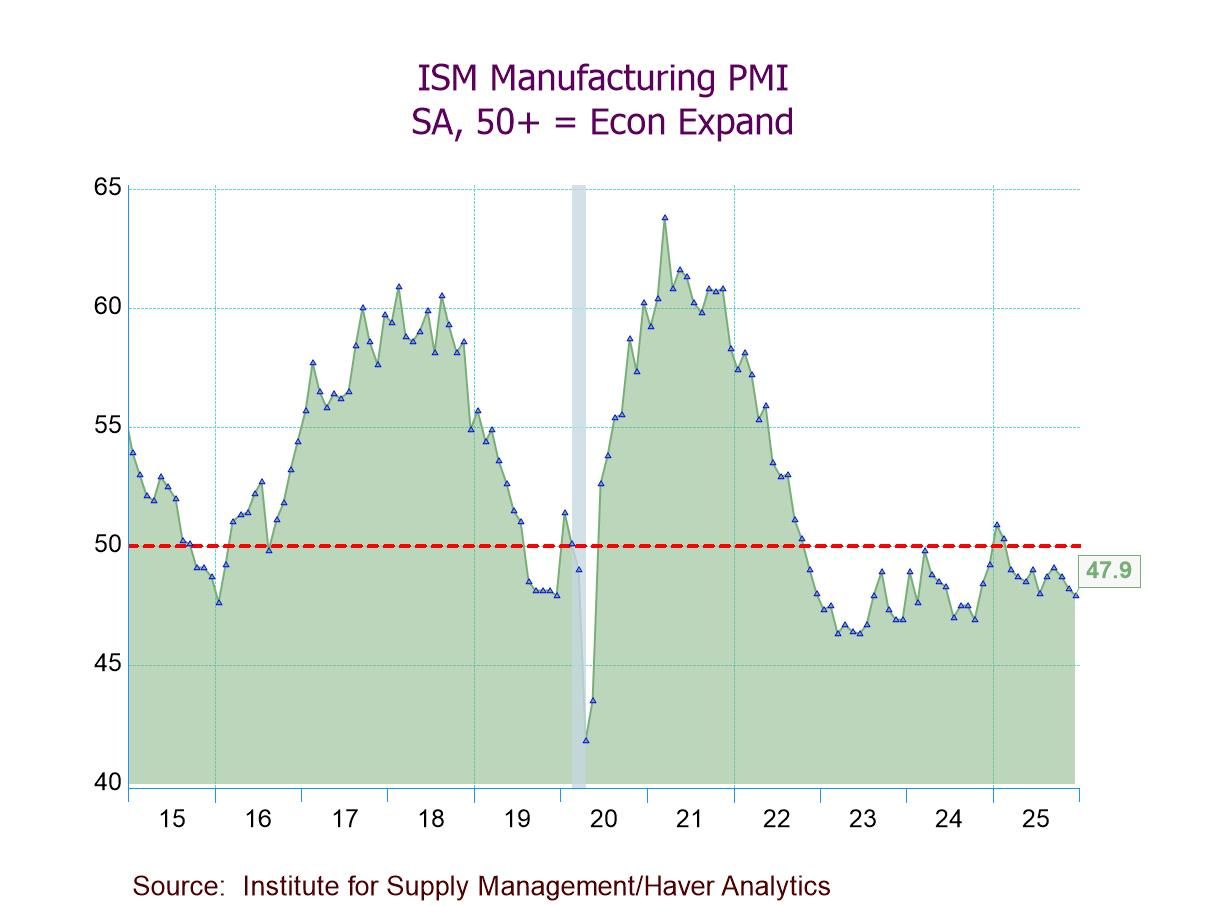Japan’s IP Falls Hard in January

Weakness is broad across sectors Japan’s industrial production fell hard in January, dropping 7.4% (month-to-month!) after rising 1.2% in December; the December gain followed a drop of 1.3% in November. Japan's industrial output has been unstable for a number of months: manufacturing production has fallen month-to-month in 11 of the last 16 months. During that span, there was only one episode of industrial production rising month-to-month in consecutive months and one of those two months was an extremely small gain of only 0.1%. The changes in industrial output have been choppy during this span. The last five monthly increases in industrial production averaged a month-to-month rise of 2.6% while the last 11 declines averaged a month-to-month drop of 2.1%. These are extremely volatile numbers, and it makes it very hard to pin down an exact pattern for industrial production except that the preponderance of declines makes it clear that the direction is lower, and the speed is ‘too-fast.’
The table makes it clear that there are declines in industrial production over three months, six months and 12 months for all the categories in the table with one single exception - that is transportation output over 12 months. And the progression is to faster and faster declines with exception of utilities output over the last three months that fell at ‘only’ a 5.6% annual rate while declining at an annual rate of 13.8% of six months.
In the quarter-to-date, industrial production is falling overall in manufacturing and in each category at astonishingly strong paces; even utilities output is falling at a double-digit rate early in the first quarter at a 12% annual rate of decline.
The authorities are giving guidance for some recovery in industrial production ahead although that's not particularly reassuring. After such sharp declines, Japan is really staring in the eye a great deal of weakness.
In addition to that, there's not anything queued up that is boosting industrial production in any obvious way for the road ahead.


Japan's retail sales are slowing. Growth rates over three months, six months and 12 months all are slipping. The three-month and six-month growth rates are already negative, and the 12-month growth rate is weak. Japan’s two most important trading partners are going in opposite directions. China is struggling, while the U.S. economy has been posting stronger than expected results. Japan’s best chance for supporting growth may come from pursuing the right opportunities in the international arena.
At home, of course, Japan’s fiscal deficits and pile of debt are by now legendary. And Japan faces adverse demographics with a shrinking population. Boosting the economy is not going to be easy. Recently the labor force has managed to grow despite population shrinkage as participation rates have risen.
The way ahead for Japan is not going to be easy. The Bank of Japan seeks to hit its 2% inflation target, but inflation has peaked in Japan below levels seen in other international money center countries and inflation pressures in Japan continue to abate with the year-on-year rate already closing in fast on the 2% mark as it falls. Will inflation hold the line at 2% or not? The BOJ is waiting for the spring labor round to give it guidance on what lies ahead. Japan faces challenges to growth, to achieving its inflation goal, and on its fiscal side. The demographic challenge is huge and that must be confronted; it will be the key to success or failure on all fronts.
Robert Brusca
AuthorMore in Author Profile »Robert A. Brusca is Chief Economist of Fact and Opinion Economics, a consulting firm he founded in Manhattan. He has been an economist on Wall Street for over 25 years. He has visited central banking and large institutional clients in over 30 countries in his career as an economist. Mr. Brusca was a Divisional Research Chief at the Federal Reserve Bank of NY (Chief of the International Financial markets Division), a Fed Watcher at Irving Trust and Chief Economist at Nikko Securities International. He is widely quoted and appears in various media. Mr. Brusca holds an MA and Ph.D. in economics from Michigan State University and a BA in Economics from the University of Michigan. His research pursues his strong interests in non aligned policy economics as well as international economics. FAO Economics’ research targets investors to assist them in making better investment decisions in stocks, bonds and in a variety of international assets. The company does not manage money and has no conflicts in giving economic advice.




 Global
Global

